After a busy trading week in early July, the Vietnamese market experienced three consecutive weeks of decline and hit a low of 1,218 points last week. Although the index recovered afterward, liquidity dropped sharply. The Vietnamese stock market performed "gloomily" in the context of very positive macroeconomic information.
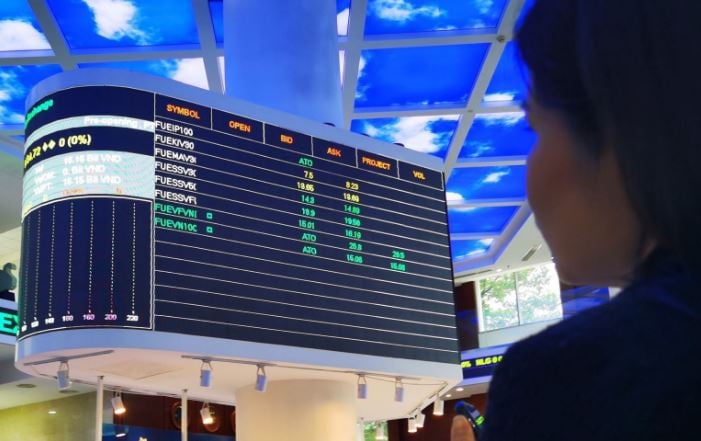
The "gloomy afternoon market" situation
Experts from Vietnam Construction Securities Joint Stock Company (CSI) said that the notable point last week was that liquidity returned to the "gloomy afternoon market" state in the last two trading sessions of the week when caution dominated market sentiment.
Liquidity last week decreased by 19.8% compared to the average level of 20 trading weeks. Accumulated for the whole trading week, average liquidity on HOSE reached 623 million shares, down 17.46%, equivalent to 16,096 billion VND (down 17.42% in trading value).
Demand showed signs of increasing in the last trading session of the week, but was not strong enough to overcome the strong supply pressure in the first two sessions of the week. Therefore, the number of sectors that decreased in points still dominated last week with 17/21 sectors decreasing in points.
Profit-taking pressure increased in the telecommunications technology group, down 11.61% after the previous overheating period. The group "sensitive" to the general market, securities, fell 6.02%. Next was chemicals, down 5.84%; textiles, down 5.76%...
Meanwhile, the groups that increased points were plastic stocks up 2.66%, pharmaceuticals up 0.97%, and aviation up 0.72%, all of which are groups with medium and small capitalization.
Foreign investors had a net buying week again after 20 consecutive weeks of net selling on the HOSE. By the end of the week, foreign investors net bought 457 billion VND on this floor. The focus of net buying last week was on some typical stocks such as: KDC (470 billion VND), SBT (439 billion VND), VNM (232 billion VND).
At the end of the trading week from July 22 to 26, VN-Index decreased by 22.67 points to 1,242.11 points; HNX-Index ended the week at 236.66 points, down 3.86 points compared to the previous weekend.
VN-Index regained green and closed at the highest level in the last trading session of the week, but liquidity remained at a very low level without any explosion to support the increase, the matched volume on HOSE decreased by 32.8% compared to the average of 20 sessions.
“Although the decline has shown signs of slowing down, the upward reversal has not been confirmed yet as the recovery sessions have decreased volume and are at very low levels,” CSI commented.
However, according to CSI, the positive point is that VN-Index has retested the support level of 1,219 points and increased quite well in points. The possibility of VN-Index in the recovery signal with the expectation of moving towards the resistance level around 1,255 points (the support level that was broken last week) before accumulating to form a newer trend, CSI commented.
In fact, the Vietnamese stock market last week performed poorly in the context of very positive macroeconomic information. Notably, last week, reports from a number of organizations such as HSBC and Citibank all had positive assessments of Vietnam's economic prospects, based on the strong growth momentum of GDP in the second quarter and the export and FDI sectors. HSBC raised its 2024 GDP growth forecast to 6.5% (previously 6%) and reduced its inflation forecast to 3.6%.
Besides, Vietnam's foreign investment attraction is looking towards an optimistic number when the Ministry of Planning and Investment expects Vietnam to attract about 39 - 40 billion USD in foreign investment this year, equivalent to or higher than the results in 2023.
Technically, experts from Saigon - Hanoi Securities Joint Stock Company (SHS) believe that VN-Index is tending to retest the price zone around 1,255 points, the highest price zone in 2023, as well as the short-term and medium-term trend line connecting the lowest price zones in November 2023, April 2024 and July 2024. The short-term trend of VN-Index is still negative.
In a positive scenario, VN-Index needs to surpass the resistance zone around 1,255 points, the highest price in 2023, to improve the short- and medium-term trend.
The positive point is that the market is strongly differentiated, many stocks are quite active and increasing in price, aiming to surpass the old peak when having good business results in the second quarter of 2024 such as some stocks in the industrial park real estate group, gas distribution, plastics, oil and gas transportation, gasoline... some technology stocks tend to recover to the old peak.
Mr. Pham Binh Phuong, an analyst from Mirae Asset Securities Joint Stock Company (Vietnam), said that after a sharp decline of nearly 80 points (1,295 points to 1,218 points), the current "bounce" still has many characteristics of a short-term recovery. Investors should pay attention to the resistance level of 1,245 - 1,250 points, this is an important challenge for VN-Index next week. "Meanwhile, we assess that the 1,230 point area will be an important support," Mr. Phuong stated his opinion.
Analyst Nguyen Huy Phuong from Dragon Viet Securities Joint Stock Company (VDSC) said the market has recovered and returned to the 1,242 point area after being supported at the 1,230 point area. Liquidity remains low, showing that the temporary supply has not put pressure on the market.
However, in general, the cash flow has not improved even though the market has increased quite well. It is likely that the market will continue to be supported and explore the supply, but the resistance zone of 1,245-1,250 points is expected to put pressure on the market in the coming time.
In fact, the performance of the Vietnamese stock market last week was quite similar to the world stock market.
US stocks escape sell-off wave
Wall Street’s major indexes rose on Monday as investors returned to big tech stocks that had been sold off sharply earlier in the week. Inflation data also fueled optimism that the Federal Reserve will soon start cutting interest rates.
Closing this session, the S&P 500 index increased 1.11% to 5,459.10 points; the Nasdaq technology index added 1.03% to 17,357.88 points; the Dow Jones industrial index increased 1.64% to 40,589.34 points.
Shares of five members of the powerful, influential group of seven companies in the US technology sector rose in price this session, led by Meta Platforms with a 2.7% increase. The two exceptions were Tesla and Alphabet, which both fell 0.2%; of which, Alphabet's stock closed at its lowest level since May 2. Previously, the weak profit results of the two "giants" Tesla and Alphabet caused a strong sell-off in the session on July 24.
Small-cap stocks, which are sensitive to the economy, were also supported in the session by the US personal consumption expenditures (PCE) price index data for June.
According to the US Department of Commerce, the personal consumption expenditures (PCE) price index decreased to 2.5% in June 2024, compared with 2.6% in May 2024. This data shows that inflation is cooling, which could pave the way for the Fed to start easing monetary policy next September.
Following the data, the market's odds of a 25 basis point rate cut at the September meeting remained steady at around 88%, according to CME's FedWatch tool, while LSEG data showed traders were still largely anticipating two rate cuts this year.
However, the gains in US stocks this session could not completely offset the declines of the S&P 500 and Nasdaq indexes in previous sessions, with both indexes recording their second consecutive weekly declines, with decreases of 0.82% and 2.08% respectively last week. Meanwhile, the Dow Jones index ended the week in the green, with a gain of 0.75%.
Investors are becoming increasingly nervous about corporate earnings reports next week, said senior market analyst David Morrison at financial services firm Trade Nation.
Apple, Microsoft, Amazon.com and Meta will report their second-quarter 2024 results next week, and the results from the tech giants will determine whether the record run-up in 2024 can be sustained or whether US stocks are overvalued.
Another question investors are asking is whether the shift away from large-cap stocks and toward less-performing sectors will continue. The Russell 2000, which represents small-cap stocks, posted its third consecutive weekly gain in the past two months, its best three-week streak in the green since August 2022, rising 0.75%.
According to Van Giap/VNA
Source: https://doanhnghiepvn.vn/kinh-te/kinh-te-vi-mo-tich-cuc-nhung-giao-dich-chung-khoan-tram-lang/20240727092317381








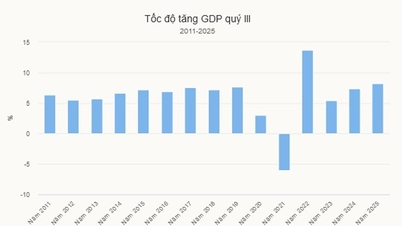











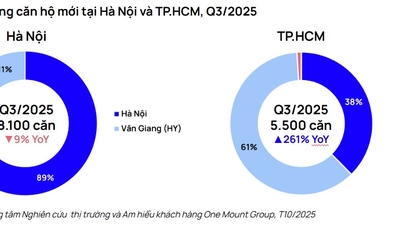



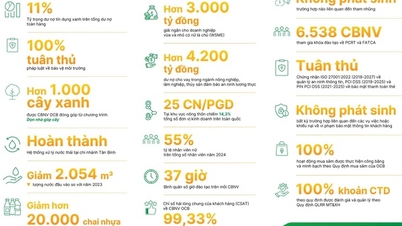


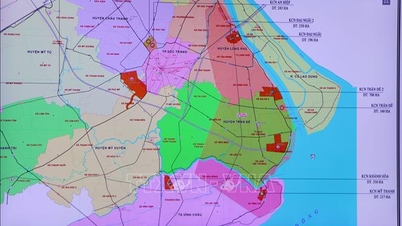













































































Comment (0)